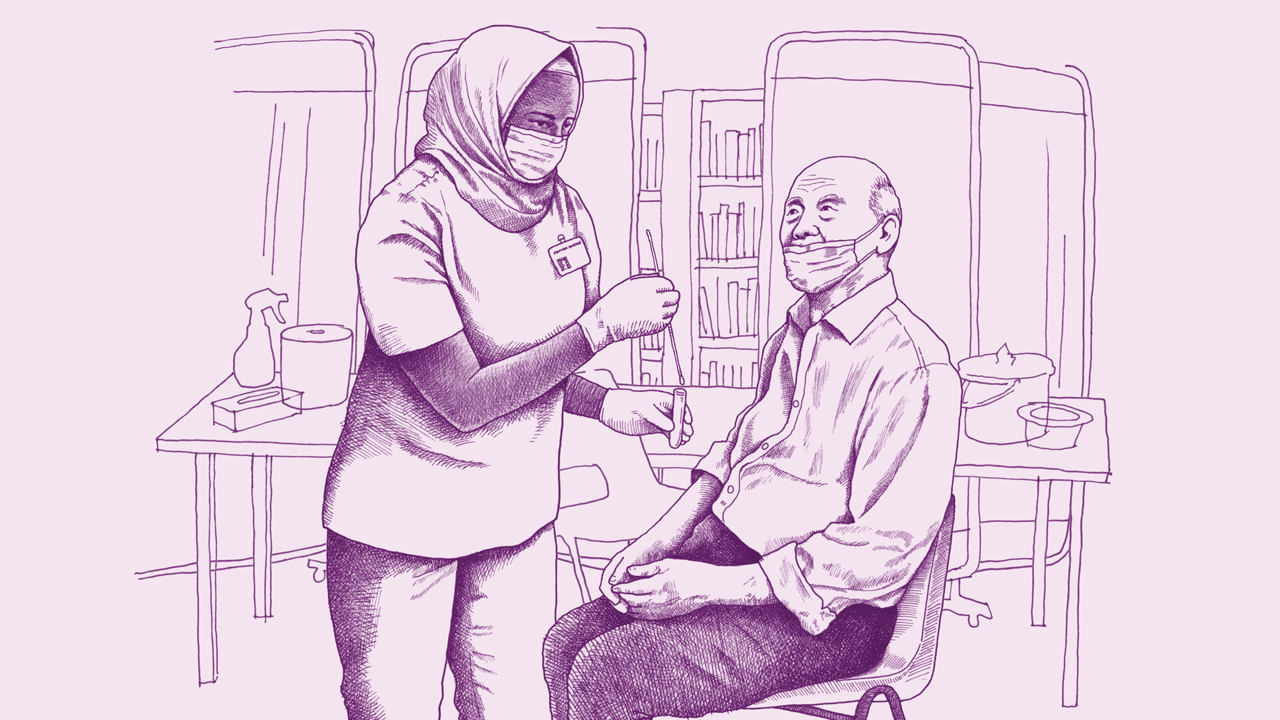Summary
Nava partnered with The Centers for Disease Control and Prevention (CDC) and The United States Digital Service (USDS) to operate and expand ReportStream, a free public health utility that enables public health departments to quickly receive data, such as COVID-19 test results. By streamlining how public health departments receive crucial data, ReportStream is making it easier for them to make decisions.
- 40,000,000 test results delivered in about the past two years
- 190 years of manual reporting time saved
Approach
During a pandemic, state, tribal, local, and territorial (STLT) public health departments must quickly receive accurate data so they can make public health decisions. However, STLTs can sometimes be slow to receive test results because there is no standardized process for transferring data. Additionally, data format requirements can differ by public health department, and transferring data securely can be a very manual process. Without timely and accurate data, making the right decisions is difficult for public health departments.
CDC identified this as a major issue during the pandemic and set out to identify ways to maintain better data practices. With help from USDS, CDC visited eight states, 20+ STLTs, and interviewed 100+ people on their IT systems. What they found was a system that heavily relied on paper to deliver test results from testing facilities to STLTs. Using agile practices, CDC devised and delivered a solution: ReportStream. ReportStream is a free service that helps public health departments quickly receive accurate public health data. CDC tapped Nava to help operate and expand the essential service.
Outcomes
ReportStream is a data pipeline—a tool that receives, routes, transforms, and transports data. Specifically, ReportStream collects and delivers test results to CDC and public health departments across the nation. CDC’s SimpleReport, which operates in tandem with ReportStream, offers a free and easy way for testing sites to report test results to public health departments via an Application Programming Interface (API).
Process
Instead of building ReportStream to solve one niche problem, which makes interoperability difficult, CDC selected ReportStream to be a building block within its North Star Architecture. This means ReportStream acts as a fundamental piece of public health data technology on which other features can be built.
CDC’s main objective with ReportStream is pandemic readiness. This means ReportStream must be able to process data from new and unexpected sources, such as a hotel-based testing site. SimpleReport makes it easy for any type of testing site to report test results. It’s browser-based, so it only requires an internet connection to operate, and it takes less than 15 minutes to learn how to use it. This last bit is crucial because SimpleReport might be used by anyone, not just medical professionals. SimpleReport’s ability to take in new types of data became apparent when CDC successfully expanded the service to include support for mpox (formerly monkeypox) data.
Pandemic readiness also means the ability to process large spikes in data. During a pandemic, the number of test results getting delivered to public health departments grows exponentially over time. CDC’s solution was to build ReportStream on the cloud, making it flexible enough to handle unprecedented data spikes. This also allows ReportStream to easily increase the number of sources and senders that handle data.
It’s also crucial that data can get delivered quickly during a pandemic. That’s why we’re working with USDS and CDC to leverage the Fast Healthcare Interoperability Resources (FHIR) standard, which is a set of data rules that helps exchange data more quickly and easily. FHIR was developed in response to the growing need for easier and quicker ways to exchange health data between systems. It’s written so that developers can begin using it without spending tons of time learning it. As FHIR’s adoption continues to grow, it becomes easier to get support and correct mistakes.
Finally, being pandemic ready means meeting public health personnel where they are. It’s not uncommon for a state public health department to reject data because it doesn’t meet the department’s validation standards. Instead of asking public health departments to amend their standards, CDC ReportStream is bending to meet them where they are. For example, the ReportStream team wrote code specific to certain public health departments to enable data transfer with them.
CDC believes that we should use our emergency system as our everyday system. By leveraging ReportStream during non-pandemic times, we can continue to iterate and improve on the service so that it’s ready for the unexpected.
Closing summary
In the two years since CDC launched ReportStream, the service has processed around 40 million reports and has about 56 senders, 70 receivers, and covers 43 STLTs as of today.
Our shared vision is that during the next pandemic, the majority of facilities will already use ReportStream because it handles all reportable data and delivers to at least 64 public health departments and many tribal governments. Because of ReportStream, public health departments will receive quality data in a timely manner. This will enable them to make well-informed decisions that promote the public’s well-being.
Written by
Program Manager
Editorial Manager

